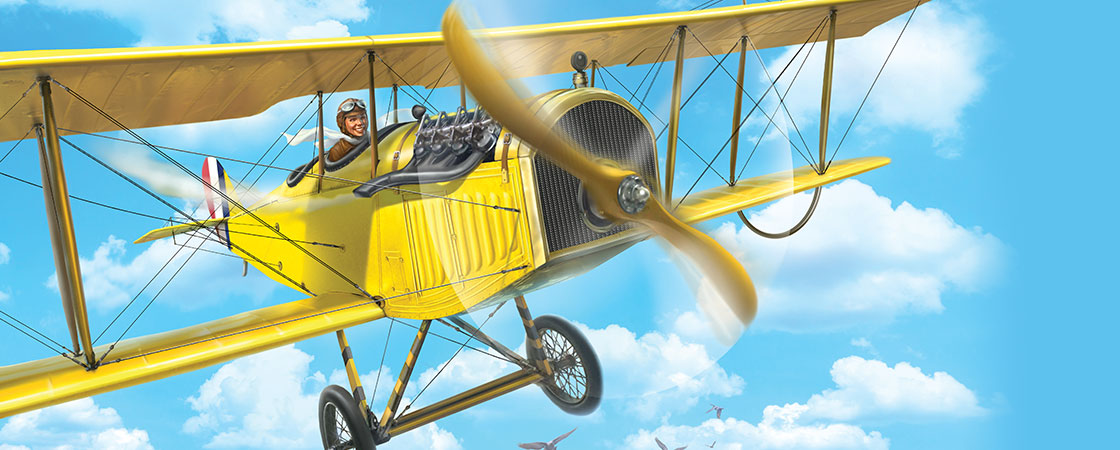GEORGE RINHART/CORBIS VIA GETTY IMAGES
The pilot circled her plane above the crowd. The wind whistled in her ears. The air felt cold on her cheeks. Suddenly she dove her plane down, plunging toward the ground. The crowd gasped.
The year was 1922. Flying was extremely dangerous back then. Many airplanes didn’t have roofs, steering wheels, or even brakes. The pilot of the plane, Bessie Coleman, knew what she was doing though. At the very last second, she swooped back up into the sky! The crowd cheered!
Coleman was famous for her daring flight tricks. Only one year before, she had made history by becoming the world’s first Black and Native American female pilot. But before she flew into history, she was a dreamer.
The pilot flew her plane above the crowd. The wind blew in her ears. The air felt cold on her cheeks. Suddenly, she dove her plane down, plunging toward the ground. The crowd watched in fear.
The year was 1922. Flying was very unsafe back then. Many airplanes didn’t have roofs, steering wheels, or even brakes. The pilot of the plane knew what she was doing though. Her name was Bessie Coleman. At the very last second, she turned her plane around and flew it back up into the sky. The crowd cheered!
Coleman was famous for her daring flight tricks. In 1921, she made history when she became the world’s first Black and Native American female pilot. Before that, she was a dreamer.

